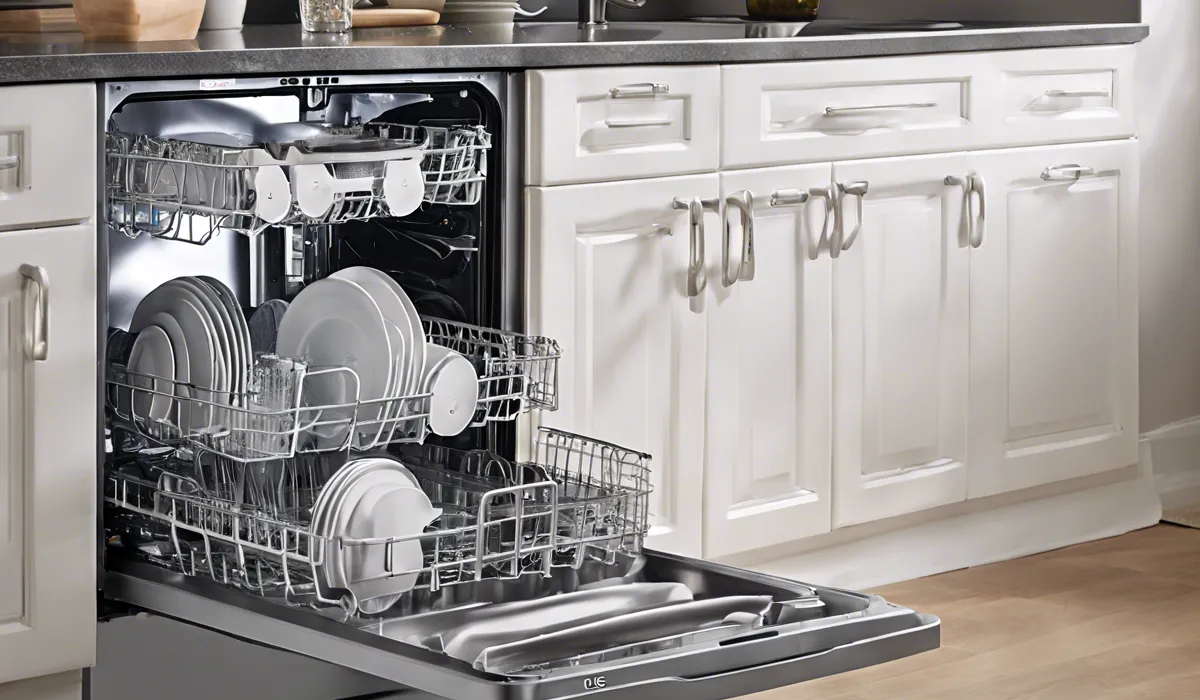How to Install LG Dishwasher: Quick & Easy Guide
To install an LG dishwasher, begin by placing the unit near the installation area. Connect the water supply line to the inlet valve and secure the drain hose. Level the dishwasher with the front legs, then anchor it to the countertop or sides. Finally, test the dishwasher for leaks and proper operation.
Step 1: Preparation for Installation

Gathering Tools and Materials
Before beginning the installation process of your new LG dishwasher, it’s important to have all the necessary tools and materials on hand.
You will need an adjustable wrench, pliers, a screwdriver, a level, a tape measure, and possibly a drill.
Additionally, you may require Teflon tape, wire nuts, and a dishwasher installation kit that includes water supply and drain lines. Having everything within reach will streamline the installation process and help avoid any unnecessary delays.
Unpacking and Inspecting the Dishwasher
Once you have your tools ready, carefully unpack the LG dishwasher. Remove all packaging materials and inspect the appliance for any signs of damage that might have occurred during transport.
If you notice any issues, it’s best to address these before proceeding with the installation. Ensure that all the included components, such as the manual, racks, and accessories, are accounted for.
Shutting Off Water and Power
Safety comes first. Before you remove your old dishwasher or install the new one, turn off the water supply to the dishwasher.
Also, shut off the power at the circuit breaker to avoid any electrical hazards. This step is crucial to prevent water damage or electrical shocks during the installation process.
Removing the Old Dishwasher
If you are replacing an old dishwasher, carefully disconnect and remove it. This typically involves disconnecting the water supply, drain line, and power.
Then, carefully slide out the old unit, being mindful not to damage your flooring or surrounding cabinetry.
Preparing Electrical Wiring
Review the electrical requirements for your new LG dishwasher, which can be found in the installation manual.
If necessary, prepare the wiring for the dishwasher’s power supply, ensuring it matches the specifications. You may need to install a new electrical outlet or hardwire the dishwasher, depending on your home’s setup and the dishwasher model.
Measuring the Space
Measure the space where you plan to install the dishwasher to ensure a proper fit. The dimensions should accommodate the dishwasher’s height, width, and depth, with a little extra room for adjustments.
Make sure that the flooring is even and that the dishwasher will be able to open and close without obstruction.
Understanding Installation Instructions
Take the time to read through the installation manual provided with your LG dishwasher.
Understanding the manufacturer’s instructions and recommendations can prevent mistakes during installation.
If any part of the instructions is unclear, it may be helpful to seek additional guidance or consider hiring a professional.
Step 2: Installing the LG Dishwasher

Positioning the Dishwasher
Place your LG dishwasher near the designated space, ensuring that the back is facing the wall and the front is aligned with the cabinetry.
Before pushing it into place, double-check that the power cord, water supply, and drain hose can reach their respective connections without being stretched or pinched.
Leveling and Adjusting the Feet
Once the dishwasher is positioned, use a level to check that it is even from front to back and side to side.
Adjust the feet as necessary to achieve a level position. An unlevel dishwasher may lead to improper draining and reduced performance.
Connecting the Water Supply
Connect the water supply line to the dishwasher’s inlet valve. Use Teflon tape on the threads to ensure a watertight seal. Tighten the connection with an adjustable wrench, but be careful not to overtighten as this could damage the valve.
Attaching the Drain Hose
The drain hose should be attached to the dishwasher’s drain port and routed to the sink or garbage disposal.
Make sure the hose is elevated at one point to prevent backflow. Use clamps to secure the hose in place and ensure there are no kinks that could impede drainage.
Making Electrical Connections
Follow the installation manual to make the correct electrical connections. This may involve connecting the power cord to a dedicated outlet or hardwiring the dishwasher directly into the home electrical system.
Use wire nuts to secure the wire connections and ensure that they are covered by the electrical box or junction box as required.
Securing the Dishwasher
Once the dishwasher is connected, push it gently into its final position. Secure it to the countertop or cabinetry using the brackets provided. This step is essential to prevent the dishwasher from tipping when the door is opened and loaded with dishes.
Checking Connections for Leaks
Before finalizing the installation, double-check all water and drain line connections for leaks.
Tighten any fittings if necessary. A small flashlight can be helpful in spotting any drips or moisture that might indicate a problem.
Step 3: Finishing Touches and Testing

Installing the Kick Plate and Toe Panel
Attach the kick plate and toe panel to the bottom front of the dishwasher according to the installation manual.
These components help to protect the dishwasher’s electrical and plumbing connections and provide a finished look that integrates with your cabinetry.
Turning On Water and Power
With everything in place, turn the water supply back on and restore power to the dishwasher at the circuit breaker. Ensure that there are no immediate signs of leaks or electrical issues before proceeding to the test cycle.
Running a Test Cycle
Run the dishwasher through a complete test cycle without dishes to check for proper operation.
Monitor the dishwasher for any unusual noises, leaks, or errors. This is a vital step to ensure everything is functioning correctly before you start using it regularly.
Checking for Leaks and Operation
After the test cycle, inspect the dishwasher for leaks and ensure that it drained properly.
If you find any issues, make the necessary adjustments. It’s also a good opportunity to verify that the dishwasher operates quietly and efficiently as expected.
Making Necessary Adjustments
If you detect any problems during the test cycle, such as leaks or operational issues, pause to make adjustments.
This could involve leveling the dishwasher further, tightening connections, or consulting the manual for troubleshooting tips.
Securing and Sealing the Dishwasher
In some installations, it may be necessary to seal the dishwasher to the countertop to provide extra stability and prevent movement. Use silicone sealant or adhesive as instructed in the installation manual if required.
Cleaning Up and Disposal
With your new LG dishwasher installed and tested, clean up the installation area. Dispose of or recycle the packaging materials appropriately, and store any extra components or tools.
You can now enjoy the convenience and efficiency of your new appliance with peace of mind, knowing it has been installed correctly.
FAQs About Installing an LG Dishwasher
What do I need to prepare before installing my LG dishwasher?
Before installing your LG dishwasher, ensure the installation area is clear, you have the necessary tools, and the water supply and drain lines are accessible. Also, check that the electrical supply is correct and turned off.
How do you connect the water supply line to an LG dishwasher?
To connect the water supply line, align it with the inlet valve at the bottom of the dishwasher and secure it firmly to avoid leaks.
What is the correct way to secure the drain hose on an LG dishwasher?
The drain hose should be attached to the dishwasher’s drain port and then routed either to a garbage disposal or directly to a drain, ensuring it is elevated to prevent backflow.
How do I ensure my LG dishwasher is level?
Adjust the front legs of the dishwasher until the appliance is level from front to back and side to side, using a spirit level to confirm accuracy.
How can I test my LG dishwasher after installation?
After installation, turn on the electrical and water supplies, run the dishwasher on a short cycle, and check for any signs of leaks or operational issues.
Final Thoughts
Installing an LG dishwasher involves positioning the unit, connecting the water supply to the inlet valve, and securing the drain hose.
It’s essential to level the dishwasher using the front legs and then anchor it to the countertop or cabinetry. Upon installation, a thorough check for leaks and a test run are crucial to ensure proper functionality.





